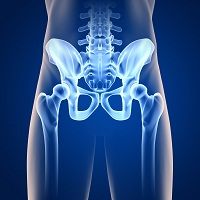Hip Arthroplasty Safe Zone: Questioning Historic Assumptions
Researchers from the Hospital for Special Surgery, New York, have published a study indicating that component position alone is not protective against instability.

Nearly one in 10 patients who undergo total hip arthroplasty (THA) experience post-operative dislocation. Many factors can contribute to dislocation: previous studies have identified use of a smaller femoral head and a posterolateral surgical approach as increasing dislocation risk. Since 1978, orthopedic surgeons have used the Lewinnek safe zone as a guide for the best position for acetabular components to reduce dislocation risk. Lewinnek et al. defined this zone based on a very small sample size, and some surgeons have questioned its validity.
Researchers from the Hospital for Special Surgery, New York, have published a study indicating that component position alone is not protective against instability.
This study used a large prospective institutional registry to reexamine the question of a safe zone for acetabular component position. They identified patients who experienced a dislocation event within six months after hip arthroplasty surgery. Among the 7,040 patients who underwent this procedure, 2.1% (147) experienced dislocation; this rate is within expected limits. The researchers employed anteroposterior radiographs to measure acetabular component position.
The researchers found no significant difference in the number of dislocated hips among the radiographic zones (± 5°, ± 10°, and ± 15° boundaries).
Patients who were younger than 50 and patients who were older than 70—at the time of surgery— were at the greatest risk for dislocation. Among patients younger than 50, dislocators were less active preoperatively than nondislocators. Most dislocations were mechanical, occurring during body position changes (rising from a chair or reaching forward). They identified a non-significant trend showing larger head sizes associated with a lower risk of dislocation.
These results suggest that an actual safe zone based upon acetabular position is nonexistent. They hasten to point out that their findings do not indicate that component position is unimportant. THA component placement can affect wear and range of motion, and can contribute to a THA’s success.